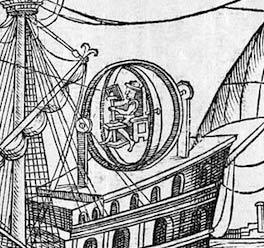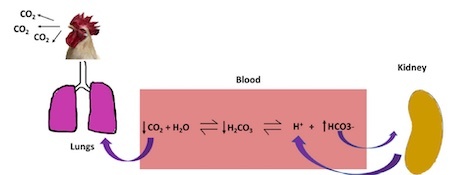Marc Abrahams's Blog, page 78
June 14, 2021
Podcast Episode #1072: “The Misery of Misophonia”
The Ig Nobel Prizes honor achievements that make people LAUGH, then THINK.
In the Ig Informal Lectures, some days after the ceremony, the new Ig Nobel Prize winners attempt to explain what they did, and why they did it.
In Podcast Episode #1072, Marc Abrahams presents the 2020 Ig Nobel Prize winner for Medicine Damiaan Denys. He and colleagues Nienke Vulink and Arnoud van Loonreceive won the prize for diagnosing a long-unrecognized medical condition: Misophonia, the distress at hearing other people make chewing sounds.
The study:
“Misophonia: Diagnostic Criteria for a New Psychiatric Disorder,” Arjan Schroder, Nienke Vulink, and Damiaan Denys, PLoS ONE, vol. 8, no. 1, 2013, e54706.
“Cognitive Behavioral Therapy is Effective in Misophonia: An Open Trial,” Arjan E., Schröder, Nienke C. Vulink, Arnoud J. van Loon, and Damiaan A. Denys, Journal of Affective Disorders, vol. 217, 2017, pp. 289-294.
Seth Gliksman, Production Assistant
Available on Spotify, Apple Podcasts, Overcast, Google Podcasts, AntennaPod, BeyondPod and elsewhere!

The Ups and Downs of Marine Chairs
In the days when it was essential for marine navigators to be able to get a good visual fix on stars and other astronomical objects, many inventors tried to find ways of creating a ‘Marine Chair’ which would stay still while the ship rolled about in the middle of the ocean. Various national governments offered generous prizes for coming up with an invention which worked.
The illustration shows one of the first attempts – which unfortunately didn’t perform as well as was hoped. Le Cosmolabe by Jacques Besson, published in Paris in 1587. As professor Martin J Murphy PhD FAAPM from the Department of Radiation Oncology at Virginia Commonwealth University, US explains :
“Similar devices were proposed later by Galileo, Neville Maskelyne, and others as a means of making astronomical measurements for the determination of longitude at sea. (They didn’t work.) “
For another short history of the not-so-successful development of marine chairs, see this essay from Dr Alexi Baker who was a postdoctoral fellow at CRASSH, University of Cambridge, UK, and is now collections manager at the Division of the History of Science and Technology, Yale Peabody Museum, Connecticut, US.
BONUS ASSIGNMENT [optional] Why didn’t marine chairs work?

June 10, 2021
Picture the Heat Stress on Poultry
One picture is perhaps worth 1000 squawks. That picture is figure 3 (captioned “Schematic diagram showing an acid-base imbalance in poultry under heat stress”) in this study:
“Impact of Heat Stress on Poultry Health and Performances, and Potential Mitigation Strategies,” Sanjeev Wasti, Nirvay Sah and , Animals, vol. 10, 2020, no. 1266. (Thanks to Berry Pinshow for bringing this to our attention.) The authors, at the University of Hawaii at Manoa, explain:
High environmental temperature alters the poultry health and performances by causing heat stress. Heat stress elicits physiological, behavioral, and production changes in poultry. This review article summarizes these changes along with the strategies that have been used in the poultry industry to ameliorate the adverse effects of heat stress in poultry.

June 8, 2021
An Ig Nobel exercise from Madame Van Isterdael
Madame Van Isterdael educates you, in this language-learning video which she calls, enchantingly, “2euro méthodo CE the IG Nobel Prizes“:

June 7, 2021
Logged logs
Say, how many logs would a lumber-carrier-vessel captain’s log log if a lumber-carrier-vessel captain’s log logged logs?
The answer is not contained, nor is the question directly addressed, in Granite Geek’s article ” ‘Structural round timber’ sounds much better than ‘logs’ “.

Fishbase profile : The Inexplicable Shrimpgoby
 The Inexplicable Shrimpgoby (Cryptocentrus inexplicatus) was named as such by the American ichthyologist (fish studier) and lichenologist (lichen studier) Albert William Christian Theodore Herre c. 1934.
The Inexplicable Shrimpgoby (Cryptocentrus inexplicatus) was named as such by the American ichthyologist (fish studier) and lichenologist (lichen studier) Albert William Christian Theodore Herre c. 1934.
It’s one of more than 33,000 fish species listed by the online resource Fishbase – A Global Information System on Fishes (a branch of the Philippines-based Q-quatics group).
It’s not immediately obvious why the Inexplicable Shrimpgoby is (or was) inexplicable, In other words, at first glance at least, its inexplicableness appears to be unexplained.
BONUS : Sneaking behaviour in the dusky frillgoby Bathygobius fuscus
The CC photo is courtesy John E. Randall at Fishbase
Research research by Martin Gardiner

June 6, 2021
Podcast Episode #1071: “Umbrella Progress on a Crowded Sidewalk”
In Podcast Episode #1071, Marc Abrahams shows an unfamiliar research study to physicist Melissa Franklin. Dramatic readings and reactions ensue.
Remember, our Patreon donors, on most levels, get access to each podcast episode before it is made public.
Melissa Franklin encounters:
“Impact of Holding Umbrella on Uni- and Bi-Directional Pedestrian Flow: Experiments and Modeling,” Ning Guo, Qing-Yi Hao, Rui Jiang, Mao-Bin Hu, and Bin Jia, arXiv 1606.03434, December 21, 2015.
Seth Gliksman, Production Assistant
Available on Spotify, Apple Podcasts, Overcast, Google Podcasts, AntennaPod, BeyondPod and elsewhere!

June 4, 2021
Dead Duck Day 2020 kinda sorta postponed till 2022
The 25th Dead Duck Day, on June 5th, which was postponed from 2020 until 2021, will be more or less postponed till 2022, due to the COVID-19 pandemic. So be on the lookout for the special (postponed) 25th anniversary edition in 2022.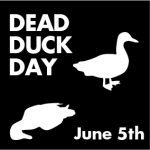
This year, like last year, Dead Duck Day will have only two participants – me and the stuffed duck, accompanied by a bottle of beer, just as on the very first Dead Duck Day celebration, 26 years ago.
Kees Moeliker
Of course everybody is free and invited to have private Dead Duck Day celebrations, anywhere in the world, to commemorate the dramatic death of the duck — and the tragedy of billions of other birds that die from colliding with glass buildings.
Here is a photo from a previous #DeadDuckDay, with a massive public gathering at Natuurhistorisch Museum Rotterdam, the site of the historic collision (photo by Maarten Laupman):
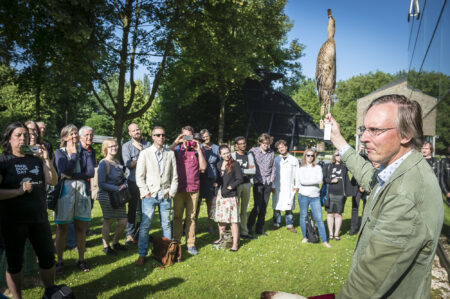
Nonetheless, a Joyous Day, This June 5, 2021
The good—not just good, but excellent—news is that June 5, 2021 is the day when the museum will be re-opening to the public, after a long closure because of the pandemic.
The number of visitors will be strictly limited because of Covid precautions. To go inside the museum on re-opening day, you can (and if you want to get in, you must!) book tickets in advance, online. And when you are there, pay your own personal homage to the carcass of the victim duck, which now resides permanently inside the museum with which it had that fatal, fateful, historic crash 26 years ago.
Ig Nobel Duck
The mallard duck that is a vital part of Dead Duck Day became known to science as the first (documented) ‘victim’ of homosexual necrophilia in that species, and earned its discoverer, Kees Moeliker, the 2003 Ig Nobel Biology Prize.

June 3, 2021
Low gravity looks at cats and pigeons and soldiers, and such
Some of the old experiments at or near the Air Force research labs in Dayton, Ohio, are on display in this video.
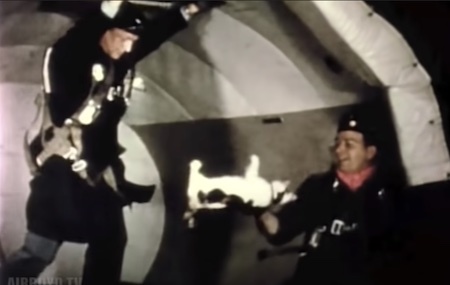
The video comes with this info, added by someone somewhere at some time:
Coverage of research at the Aerospace Medical Division HQ 657Oth Aerospace Medical Research Laboratories including scenes of F-104 seat ejection; drop tests from C-130 and ejection from F-106; effects of weightlessness on cats and pigeons in a C-131; test subjects in water tank, on centrifuge, in heat chamber and on complex coordinator. Also shows scenes of vertical deceleration tower, incline impact test facility, vertical accelerator, equilibrium chair and vibration platform.
Addition info, elsewhere, suggests the occurrences occurred in the year 1947.

June 2, 2021
A languid music video tribute to Ig Nobel Prize winners
Topster made this languid music video tribute to some of the Ig Nobel Prize winners:

Marc Abrahams's Blog
- Marc Abrahams's profile
- 14 followers


